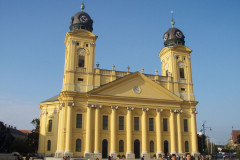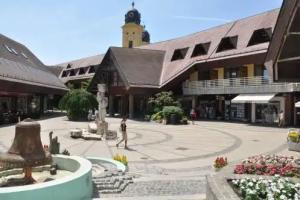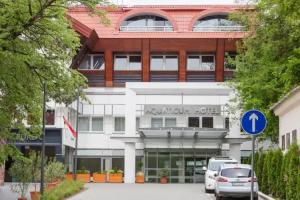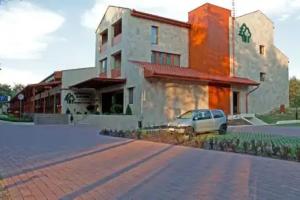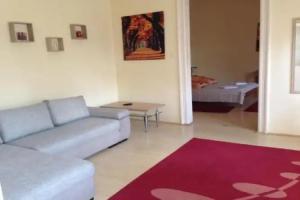Debrecen
Description
Debrecen , known by alternative names) is the second largest city in Hungary after Budapest. Debrecen is the regional centre of the Northern Great Plain region and the seat of Hajdú-Bihar county. It was the largest Hungarian city in the 18th century and it is one of the most important cultural centres of the Hungarians. Debrecen was also the capital city of Hungary during the revolution in 1848-1849 and by the end of the World War II in 1944-1945.
Name
The city was first mentioned by the name "Debrezun" in 1235. The name derived from the Turkic word "debresin", which means "live" or "move" and it is also a male given name. Other theory says the name is of Slavic origin meaning well-esteemed (Polish: Dobrze cenione). In other languages, the name of the city varies more in spelling than in pronunciation: Romanian Debreţin, German Debrezin, Serbian Debrecin Slovak Debrecín.
Location
Debrecen is located on the Great Hungarian Plain, 220 km (137 mi) east of Budapest. Situated nearby is the Hortobágy National Park.
Transport
The city used to be somewhat isolated from Budapest, Hungary's main transport hub. However, the completion of the motorway M35 means Budapest can now be reached in under two hours. Debrecen Airport (the second largest in Hungary) has recently undergone modernisation in order to be able to handle more international flights, although almost all flights to and from Hungary still use Budapest's Ferihegy Airport (now called Budapest Ferenc Liszt International Airport). Cities that can be reached from the Debrecen Airport include Brussels, Eindhoven, London, Malmö, Milan and Paris. The closest airport with scheduled flights in terms of distance is Oradea Airport in Romania 1 hour and 20 minutes away from Debrecen. There have also been improvements to some parts of the railway between the capital and Debrecen as part of Hungary's mainly EU-funded National Development Plan for 2004 to 2006.
There are many railway stations in Debrecen, the most significant is the main station of Debrecen, in addition other smaller stations exist, these include Debrecen-Csapókert, Debrecen-Kondoros, Debrecen-Szabadságtelep and Tócóvölgy.
Debrecen's proximity to Ukraine and Romania enables it to develop as an important trade centre and transport hub for the wider international region.
Local transport in the city consists of buses, trolleybuses, and trams. It is provided by the DKV (Debreceni Közlekedési Vállalat, or Transport Company of Debrecen). Nearby towns and villages are linked to the city by Hajdú Volán bus services.
History
Piac Street in 1910s DowntownThe settlement was established after the Hungarian conquest. Debrecen became more important after some of the small villages of the area (Boldogasszonyfalva, Szentlászlófalva) deserted due to the Mongol invasion of Europe. It experienced rapid development after the middle of the 13th century.
In 1361, Louis I of Hungary granted the citizens of Debrecen the right to choose the town's judge and council. This provided some opportunities for self-government for the town. By the early 16th century, Debrecen was an important market town.
King Sigismund, Holy Roman Emperor, as part of a treaty with Serbian ruler Stefan Lazarević, gave him the opportunity to rule Debrecen in September 1411. A year after Lazarević's death in 1426, his role was taken over by his successor, Đurađ Branković. Between 1450 and 1507, it was a domain of the Hunyadi family.
During the Ottoman period, being close to the border and having no castle or city walls, Debrecen often found itself in difficult situations and the town was saved only by the diplomatic skills of its leaders. Sometimes the town was protected by the Ottoman Empire, sometimes by the Catholic European rulers or by Francis II Rákóczi, prince of Transylvania. This led the town's citizens to be open-minded and Debrecen embraced the Protestant Reformation quite early, earning the monikers "the Calvinist Rome" and "the Geneva of Hungary". At this period the inhabitants of the town were mainly Hungarian Calvinists. Debrecen became a sanjak between 1541 and 1693 and orderly bounded to the eyalets of Budin (1541–1596), Eğri (1596–1660) and Varat (1660–1693) as "Debreçin".
In 1693, Leopold I, Holy Roman Emperor elevated Debrecen to free royal town status. In 1715, the Roman Catholic Church returned to Debrecen, and the town gave them a place to build a church, so the Piarist monks could build the St. Ann's Cathedral. By this time the town was an important cultural, commercial and agricultural centre, and many future scholars and poets attended its Protestant College (a predecessor of today's University of Debrecen and also of Debrecen Reformed Theological University).
In 1849, Debrecen was the capital of Hungary for a short time when the Hungarian revolutionary government fled there from Pest-Buda (modern-day Budapest). In April 1849, the dethronization of Habsburgs (neglected after the fall of the revolution) and the independence of Hungary was proclaimed here by Lajos Kossuth at the Great (Calvinist) Church (Nagytemplom in Hungarian.) The last battle of the war of independence was also close to Debrecen. The Russians, allied to Habsburgs, defeated the Hungarian army close to the western part of the town.
After the war, Debrecen slowly began to prosper again. In 1857, the railway line between Budapest and Debrecen was completed, and Debrecen soon became a railway junction. New schools, hospitals, churches, factories, and mills were built, banks and insurance companies settled in the city. The appearance of the city began to improve too: with new, taller buildings, parks and beautiful villas it no longer resembled a provincial town and began to look like a modern city. In 1884, Debrecen became the first Hungarian city to have a steam tramway.
After World War I, Hungary lost a considerable portion of its eastern territory to Romania, and Debrecen once again became situated close to the border of the country. It was occupied by the Romanian army for a short time in 1919. Tourism provided a way for the city to begin to prosper again. Many buildings (among them an indoor swimming pool and Hungary's first stadium) were built in the central park, the Nagyerdő ("Big Forest"), providing recreational facilities. The building of the university was completed. Hortobágy, a large pasture owned by the city, became a tourist attraction.
Déri MuseumDuring World War II, Debrecen was almost completely destroyed, 70% of the buildings suffered damage, 50% of them were completely destroyed. A major battle involving combined arms, including several hundred tanks (Battle of Debrecen), occurred near the city in October 1944. After 1944, the reconstruction began and Debrecen became the capital of Hungary for a short time once again. The citizens began to rebuild their city, trying to restore its pre-war status, but the new, Communist government of Hungary had other plans. The institutions and estates of the city were taken into public ownership, private property was taken away. This forced change of the old system brought new losses to Debrecen; half of its area was annexed to nearby towns, and the city also lost its rights over Hortobágy. In 1952, two new villages – Ebes and Nagyhegyes – were formed from former parts of Debrecen, while in 1981, the nearby village Józsa was annexed to the city. The newly built blocks of flats provided housing for those who lost their homes during the war. In the following decades, Debrecen was the third largest city of Hungary (behind Budapest and Miskolc), and became the second largest in the 1990s when the population of Miskolc decreased.
Culture
The main building of the University of Debrecen.Chiefly thanks to the reformation and the prestigious Calvinist College, founded in 1538, Debrecen has been the intellectual and cultural centre of the surrounding area since the 16th century. Over the centuries, the College was transformed into a University and its intellectual life developed a sphere of influence between Eger and Oradea (Hu: Nagyvárad, now in Romania). In 1949-1950, several departments of the University were shut down, due to Communist takeover, with many students and teachers being expelled. The University of Debrecen, as it is now called is still widely recognized work of architecture (mostly thanks to its main building). The university has many departments and is a major research facility in Europe. The University is well known for the cactus research laboratory in the botanic gardens behind the main building.
In the second half of the 19th century, the Debrecen press attracted several notable figures to the city. Endre Ady, Gyula Krúdy, and Árpád Tóth all began their journalistic careers in Debrecen. Prominent literary figures from the city have included Magda Szabó, and Gábor Oláh (hu). One of Hungary's best known poets, Mihály Csokonai Vitéz, was born and lived in the city. The city's theatre, built in 1865, was named in his honour in 1916, but can trace its roots back to the National Theatre Company founded in Debrecen in 1789, which at first gave performances in the carthouse of an inn. Celebrated actress Lujza Blaha is among those to have performed there.
Debrecen has a flourishing music scene and is home to Tankcsapda, one of Hungary's most popular and successful rock bands. There is also a rock school in the city offer training and mentoring to young musicians. Classic media in the city include the newspaper Napló, two TV channels, a range of local radio stations and several companies and associations producing media material.
The Debrecen Flower FestivalDebrecen is the site of an important choral competition, the Béla Bartók International Choir Competition, and is a member city of the European Grand Prix for Choral Singing. Every August the city plays host to a flower festival.
Main sights
- Protestant Great Church (Nagytemplom)
- City Park (Nagyerdő) and spa
- Déri Museum (art collection including paintings of Mihály Munkácsy; also has a collection of Ancient Egyptian artifacts)
- Flower Carnival of Debrecen held on 20 August every year
- Nagyerdei Stadion (the home football stadium of the association football club Debreceni VSC)

